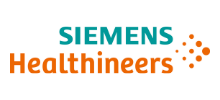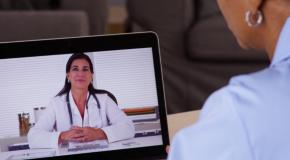Faced with rapidly escalating case numbers soon after covid-19 emerged in the city of Wuhan at the end of 2019, China quickly sought ways to support the rapid diagnosis and evaluation of patients.
Computed tomography (CT) features were included in covid-19 diagnostic criteria and the country began using artificial intelligence (AI), to analyse CT images.
However, as the pandemic spread outside China, health services became more cautious about using CT scanning for the diagnosis and risk stratification of covid-19 patients, with many radiological societies, including the American College of Radiology, the UK’s Royal College of Radiologists, the Canadian Society of Thoracic Radiology and the Canadian Association of Radiologists, actively discouraging the use of CT scanning for screening patients.
As well as reflecting uncertainties around accuracy and concerns about cross-contamination, the reluctance to use CT also arose from a need to conserve limited resources in terms of both scanners and radiologists for non-covid-19 patients, explains Professor Alexander Wong, University of Waterloo Canada Research Chair in AI and Medical Imaging: “CT systems are not moveable, they’re not portable, you cannot isolate them well.”
But now healthcare systems are increasingly seeing a role for imaging in covid-19 diagnosis. The standard method for diagnosing covid-19 is the reverse transcription polymerase chain reaction (RT-PCR) assay, but this method has some limitations. These include long turnaround time (tests often take a day or so to yield results) and sensitivity of tests are never 100%, which can mean false negatives (when a patient is given the all-clear when they actually have the infection). Not only can CT scans provide results quickly, a study in France showed that their use alongside RT-PCR can also improve testing accuracy; the same study also found that they could have a role as an effective standalone diagnostic tool, particularly in areas with relatively high disease prevalence.
Opportunities
- AI-supported imaging tools can help hospitals undertake better planning. For example in bed/ward allocations and the need for ventilators and other equipment. They could help plan workflow and the allocation of healthcare workers, especially staff in intensive care units.
- These tools could help diagnose patients faster and manage them more appropriately. They could help healthcare systems manage a second wave of covid-19, where demand could increase dramatically. They could support radiology in identifying potential covid-19 cases and the most serious cases quickly, from patients with other conditions.
- These technologies could be adapted to support the diagnosis and management of patients for other conditions in future. The performance of AI-supported tools could be improved by incorporating data on symptoms from patient questionnaires as well as other clinical indicators.
- Successful tools can act as lighthouses to create awareness of what AI can offer and to help build trust by illustrating that such tools are effective, efficient, and safe. This will improve acceptability of AI, encourage hospitals to engage with the technology and share images in the future.
Challenges
- The effectiveness of these AI-supported tools relies on machine learning so their accuracy will depend on the data used to train them. A large and diverse range of images from different sources are required to train the algorithm and these must be annotated accurately which is a laborious process.
- Hospitals have low awareness of the advantages of data sharing rules, exactly what they are allowed to share and how, and how data sharing legislation is more flexible during a public health emergency. Clear communication is needed from government or another official source to increase awareness and challenge misconceptions.
- Hospitals are wary of sharing images because of data protection issues, so trust will need to be built. After this, contracts will need to be negotiated and signed. Images need to be anonymised or pseudonymised because of data protection laws.
- Hospital IT infrastructure is complex and varied and it may prove challenging to incorporate these tools into some existing systems. For such tools to be widely accepted, it is important to build trust. AI needs to be explainable and transparent and the accuracy of such tools needs to be verified by checking performance against a common validation dataset.
- Imaging has the potential to enable some patients to be diagnosed far more quickly than PCR testing but acceptance and usage of imaging for covid-19 is variable which in turn could be a barrier to making full use of covid-19 imaging AI tools. Official recognition of a role of imaging accompanied with guidelines for clinicians on when to use it are needed.
- There are no universal standards outlining how CT scanners and X-ray machines should be decontaminated after use with patients with confirmed or suspected covid-19.








